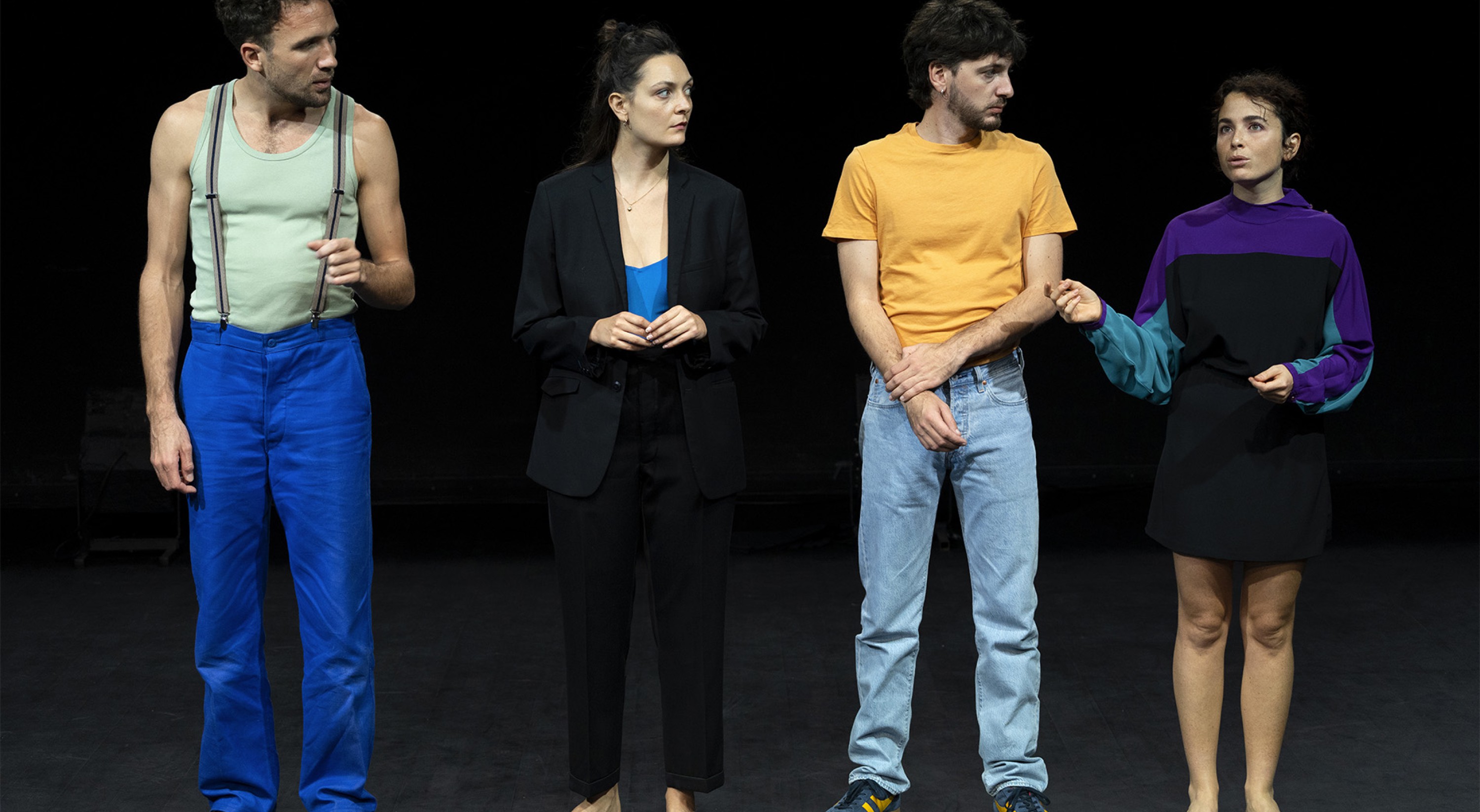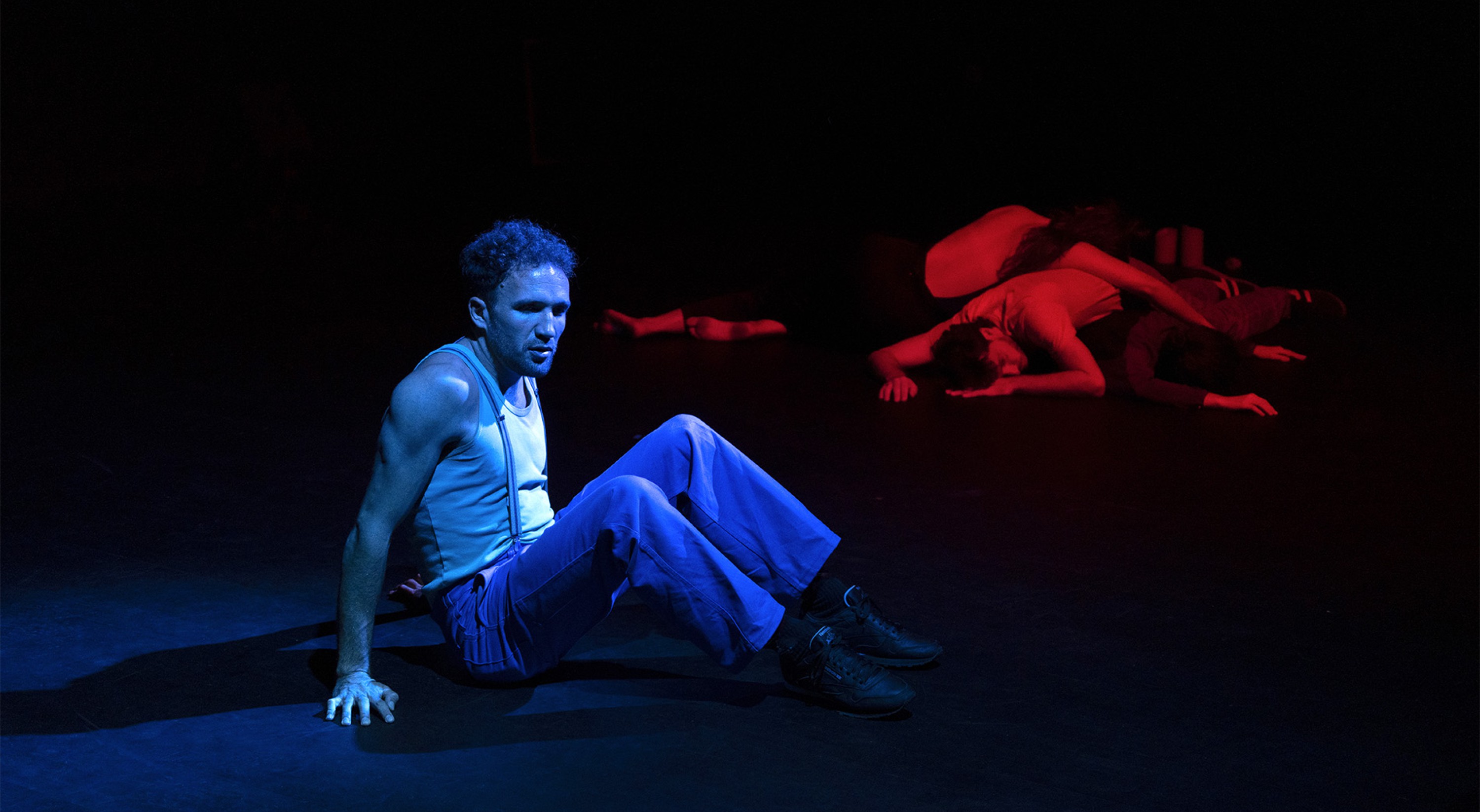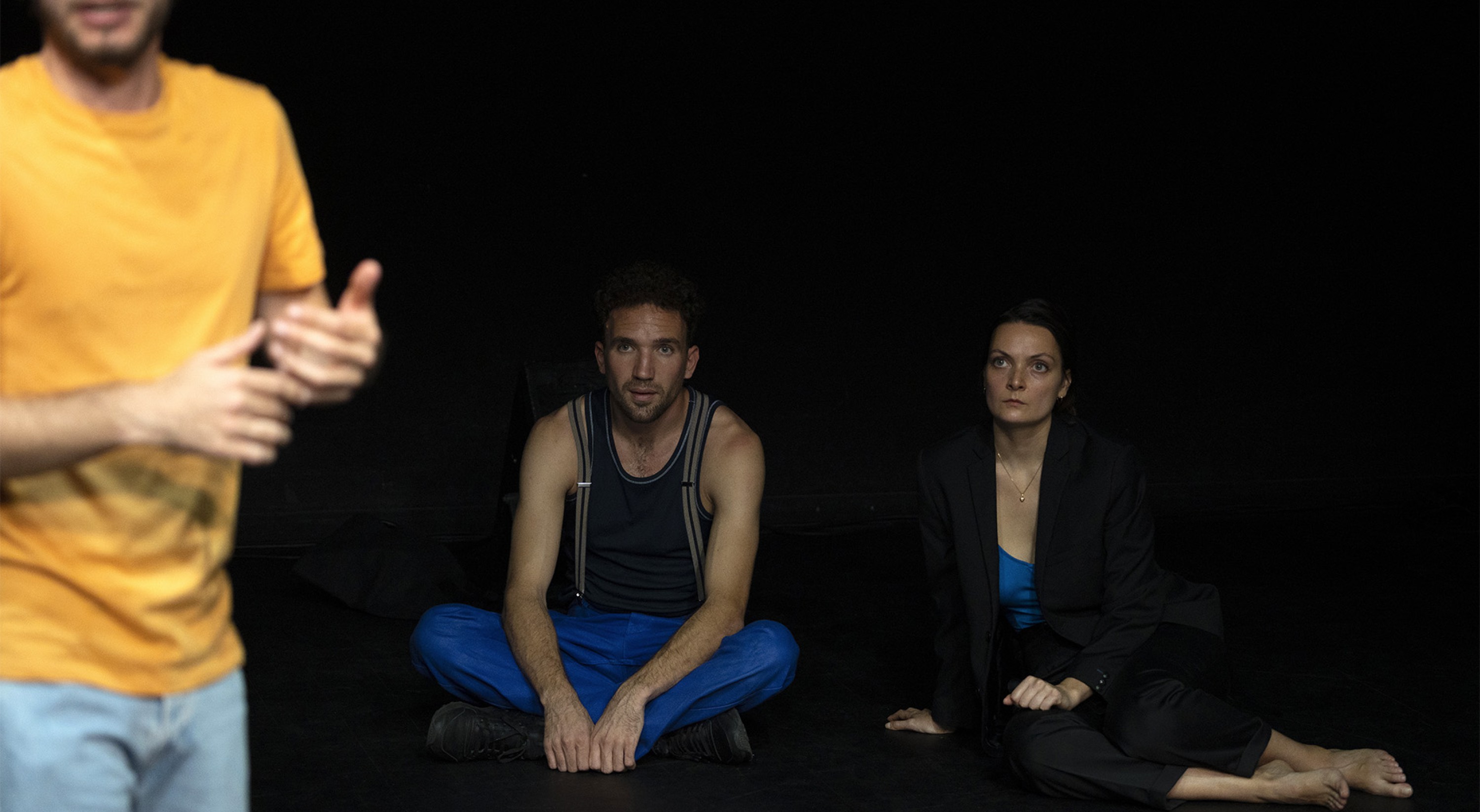Fanny de Chaillé
Une autre histoire du théâtre
octoberoct 12
octoberoct 14
Design and staging, Fanny de Chaillé
Featuring Malo Martin, Tom Verschueren, Margot Viala, Valentine Vittoz
Assistant, Christophe Ives
Lights et technical direction, Willy Cessa
Sound Manuel Coursin
Music, Malo Martin
Production manger, Isabelle Ellul
Produced by Association Display
Coproduced by Malraux – Scène nationale Chambéry Savoie; Festival d’Automne à Paris; Chaillot – Théâtre national de la Danse; Théâtre Public de Montreuil – Centre dramatique national; Le Quartz, scène nationale de Brest; Points communs – Nouvelle Scène nationale de Cergy-Pontoise Val-d’Oise; Théâtre nouvelle génération – CDN de Lyon; le Lieu unique – centre de culture contemporaine de Nantes; théâtre Garonne, Scène eu- ropéenne de Toulouse; Théâtre Molière – Sète, Scène nationale archipel de Thau; La Comédie de Clermont-Ferrand Scène nationale
Display has a contract with the Ministry of Culture, Drac Auvergne-Rhône-Alpes, and has the « Compagnie Auvergne-Rhône-Alpes »
Fanny de Chaillé is an associate artist at Théâtre Public de Montreuil – centre dramatique national et à Chaillot – Théâtre national de la Danse
Le Festival d’Automne à Paris is co-producer of this performance.
The artist Fanny de Chaillé turns the stage into a place in which ideas circulate, and where bodies become the vehicle for thought. In the company of a troupe of young actors, she dissects theatre and its history. In doing so, she investigates the power of acting itself, and its roots in the here and now of onstage performance.
Theatre has, for decades, been reinventing itself at the crossroads between the visual arts, dance, and music, and it is these radical changes and mutations that Fanny de Chaillé recounts in Une autre histoire du théâtre. Put differently, the piece deals with how the advent of transdisciplinarity has revolutionized theatre, the way we view it, and how it has enabled new forms to find their place. In order to this, she brings to the stage four young performers that she worked with during her previous creation, Le Choeur. Together, they perform major scenes from the classic works, and examine their models, or references, in order to play around with the frontiers between fiction and reality, thereby putting acting and theatrical illusion on display. Aimed at younger audiences, the piece summons up the practice of the actor or actress and its fundamental place in the history of theatre. At the heart of all theatrical creation lies the following central question: what are the deep-down reasons for wanting to become an actor or actress? Thanks to their movements and energy, these four actors and actresses embrace the whole history of theatre, and share it with us.


